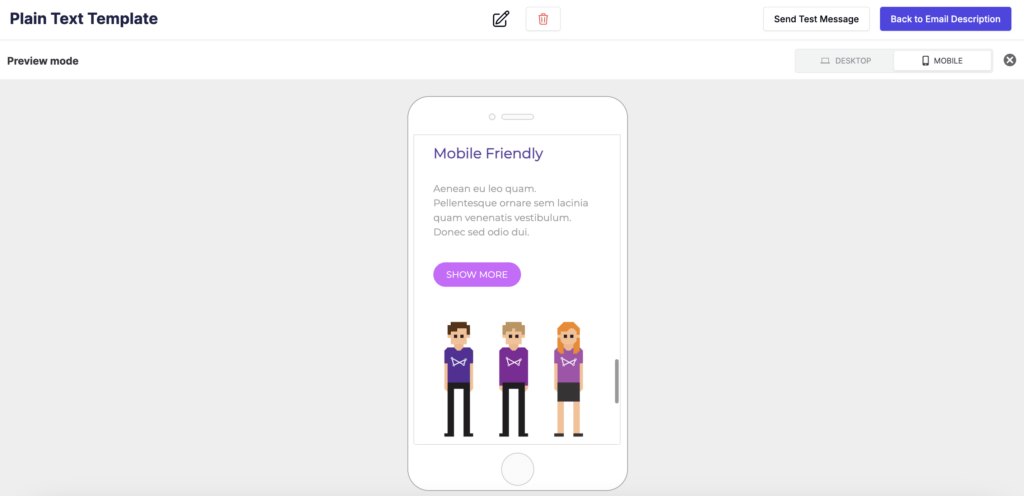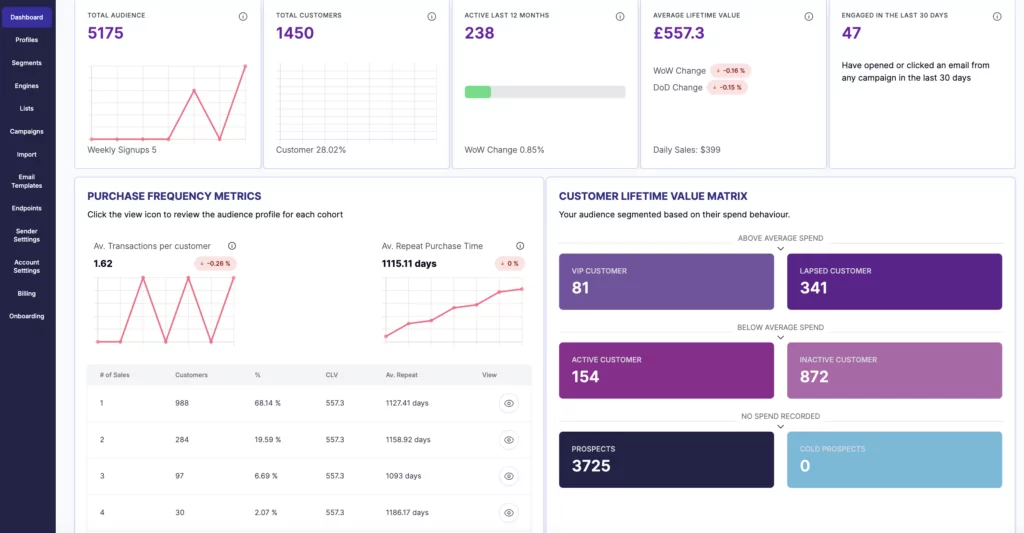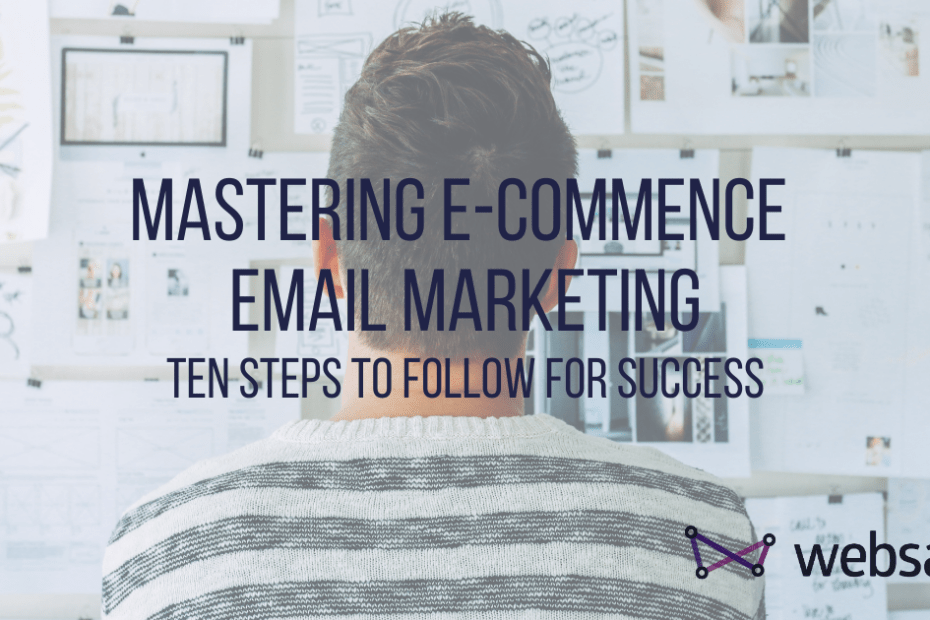Mastering E-commerce email marketing
Email marketing remains a powerful tool for e-commerce businesses to connect with their audience, drive sales, and build lasting relationships.
However, the effectiveness of an email campaign depends on how well it’s planned and executed. Many e-commerce business owners inadvertently make mistakes that can hinder the success of their email marketing efforts.
In this article, we’ll explore common pitfalls and offer practical solutions to help you optimise your e-commerce email campaigns.
Table of Contents
1. The Permission Predicament: Building Trust from the Start
One of the cardinal sins of email marketing is neglecting permission-based strategies. Sending emails to individuals who haven’t explicitly given consent can result in a damaged reputation and legal consequences.
The solution is to focus on building a permission-based email list.
Encourage users to opt-in through clear and enticing calls to action, ensuring they understand the value they’ll receive by subscribing.
Typically in e-commerce email marketing the hook is the welcome offer code.
2. The Mobile Oversight: Ensuring Emails Look Great Everywhere
With the prevalence of smartphones, overlooking mobile optimisation is a significant blunder. Failing to create responsive emails that display well on various devices can lead to missed opportunities.
Ensure your emails are mobile-friendly, with a layout that adapts seamlessly to different screen sizes.
This way, you capture the attention of users whether they’re on a desktop, tablet, or smartphone. Fortunately for you dear reader, Websand takes care of this by default within our email builder, and the preview allows you to review the preview of your message on both desktop and mobile.

3. The Personalisation Predicament: Tailoring Content for Maximum Impact
Generic emails that lack personalisation can quickly find their way to the trash bin. Businesses must tailor content to individual preferences, address recipients by name, and segment the audience based on their behaviours and interests. Implementing personalisation in your emails not only enhances engagement but also fosters a sense of connection between the brand and the consumer.
4. The Branding Blunder: Consistency is Key
Consistent branding is the glue that holds your e-commerce email marketing strategy together.
Failing to maintain a cohesive brand voice, imagery, and messaging can confuse your audience and dilute your brand identity.
Ensure that your emails reflect your brand’s personality and values, creating a seamless trust-building experience for your subscribers.
That doesn’t mean it needs to be complicated. Some of the most impactful e-commerce email marketing in my inbox are simple messages with a clear call to action. Tell people what they need to know, and tell them what they need to do next.
5. The Data Dilemma: Leveraging Analytics for Continuous Improvement
Ignoring data and analytics is a missed opportunity for growth. That’s not just reviewing your website traffic, and email behaviour, but also the behaviour of your customers.
Regularly monitor key metrics such as open rates, click-through rates, and conversion rates.
The Websand dashboard gives you a customer-focused dashboard, providing real-time analytics for your audience based on your customer spending behaviour, purchase frequency and overall engagement.

Key data to help drive growth decisions, and what is even better, the data is already organised and ready to be put into action for future marketing campaigns or customer automation journeys through the Websand Engines.
Use this valuable information to refine your strategy, identify what works best for your audience, and make data-driven decisions for future campaigns.
6. The Frequency Fiasco: Striking the Right Balance
Sending too many emails can lead to subscriber fatigue and increased unsubscribe rates.
Establish a reasonable email frequency, and provide options for subscribers to customise their preferences.
Finding the right balance ensures that your messages remain welcomed rather than becoming a nuisance.
A common question is ‘how many times can I email my audience?’. It’s often the case that you aren’t sending enough emails. However, your engagement analytics will be your guide on this.
Regularly, review and compare your performance. Make sure you at least hold your average open and click performance. And be sure to look out for peaks in unsubscribes and bounces.
If your opens are dropping but your unsubscribes are rising. That’s a sign that you might want to reduce the frequency.
7. The CTA Conundrum: Guiding Subscribers with Clear Calls-to-Action
A common mistake is neglecting to include a clear and compelling call-to-action (CTA). Clearly define the purpose of your email and guide recipients on the desired action, whether it’s making a purchase, downloading content, or visiting your website.
Here are some examples of effective calls to action (CTAs):
- Shop Now
- Discover the Latest Arrivals
- Get 20% Off Today
- Grab Your Exclusive Offer
- Explore Our Spring Collection
- Redeem Your Discount
- Start Shopping
- Claim Your Free Trial
- Unlock Savings
- Join Our VIP Club
8. The Segmentation Slip-Up: Delivering Targeted and Relevant Content
Sending the same message to your entire email list is a missed opportunity for personalisation. Utilise segmentation to divide your audience based on demographics, behaviours, and preferences. This allows you to tailor content and offers to specific segments, increasing the relevance of your emails and driving engagement.
9. The List Neglect: Regular Maintenance for Optimal Performance
Neglecting your email list can lead to decreased deliverability and engagement.
Staying compliant with anti-spam regulations is crucial for maintaining a healthy and effective email marketing strategy.
Regularly clean and update your email list by removing inactive subscribers and correcting invalid email addresses. It’s good for your sender reputation, and keeps your email marketing subscription costs down!
If you find that bounces are originating from a specific point of data capture it’s worth making sure the data you are collecting is accurate.
Look to encourage subscribers to avoid typo’s and validate email addresses wherever possible within your signup forms. That’s often why subscribers are asked to enter their email twice!
10. The Testing Troubles: Optimising Through A/B Testing
Not testing different elements of your emails is a missed opportunity for optimisation.
A/B test various components, such as subject lines, content, images, and CTAs, to understand what resonates best with your audience.
Continuous testing and refinement are key to improving the effectiveness of your email campaigns over time.
Building successful e-commence email marketing
In conclusion, e-commerce email marketing success hinges on avoiding common pitfalls and continually refining your approach.
By prioritising permission-based strategies, optimising for mobile, personalising content, maintaining consistent branding, leveraging analytics, finding the right email frequency, crafting compelling CTAs, implementing segmentation, conducting regular list maintenance, and embracing A/B testing, you can build more effective and engaging email campaigns that drive results for your e-commerce business.
Remember, the journey to mastering e-commerce email marketing is ongoing, and staying attuned to industry trends and consumer preferences will help you stay ahead of the curve.
Need help with your e-commerce email marketing?
As described in the 10 points above, email marketing is perhaps a little more complicated that you’d first realised. Getting it right is a science and one we’ve spent the last 10+ years perfecting. We’ve sent billions of emails across 1,000’s of campaigns and we’d love to help you take your e-commerce email marketing to the next step.
So if you need help, we are here to help.
Getting started is simple, schedule a call on our calendar and let’s plan out the next steps. With our managed email marketing service starting from as little as £495 a small investment can get you a big return.
